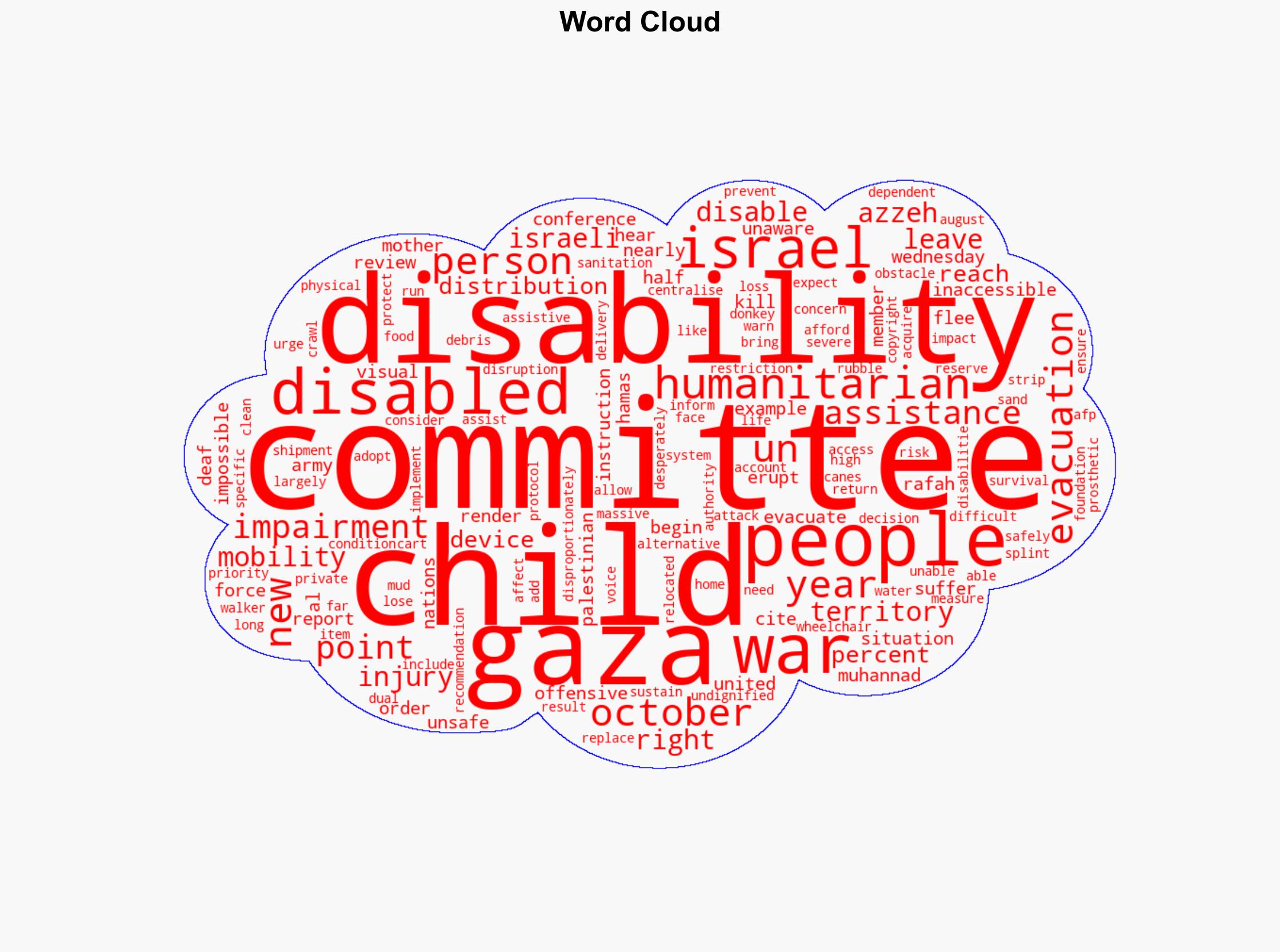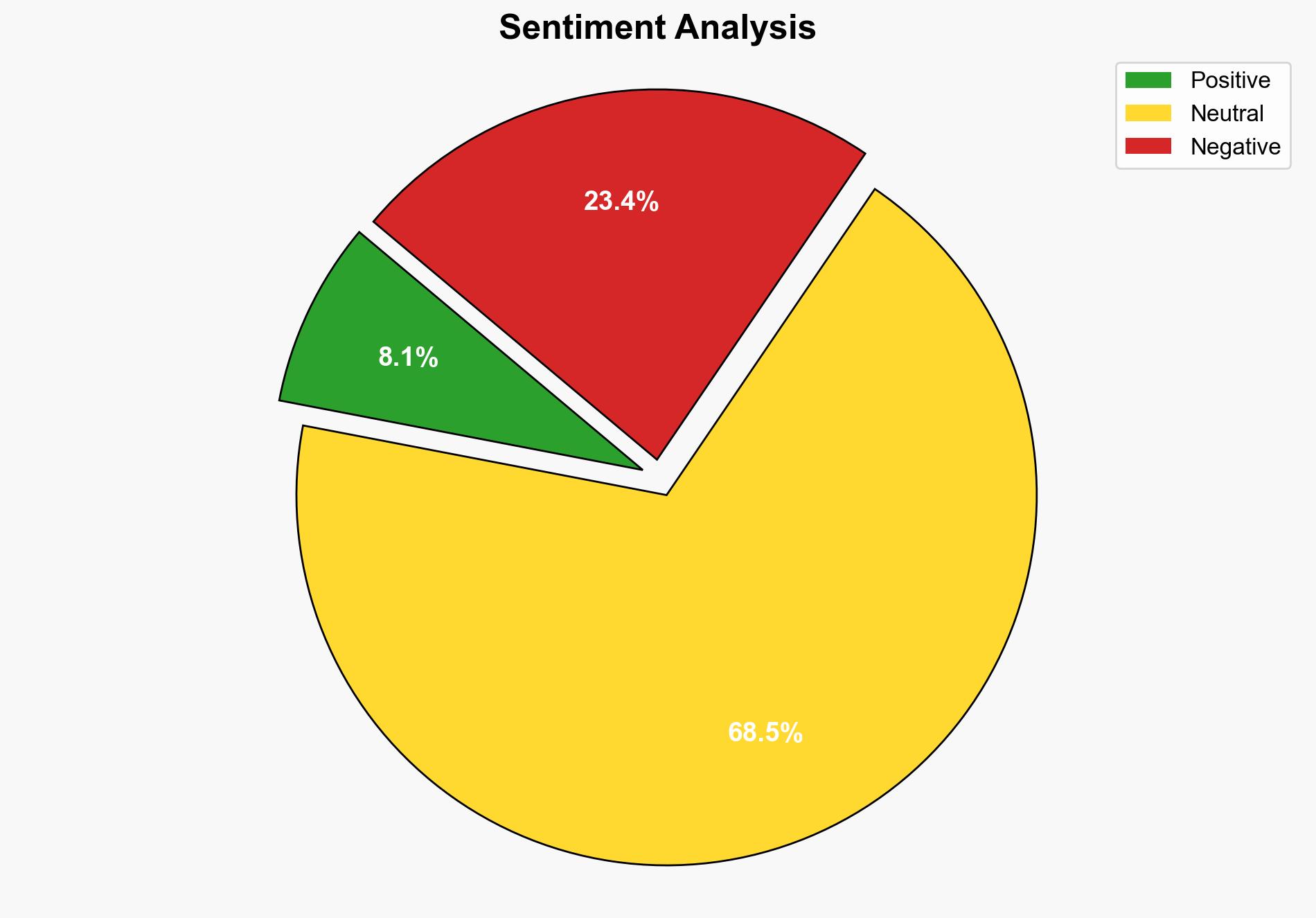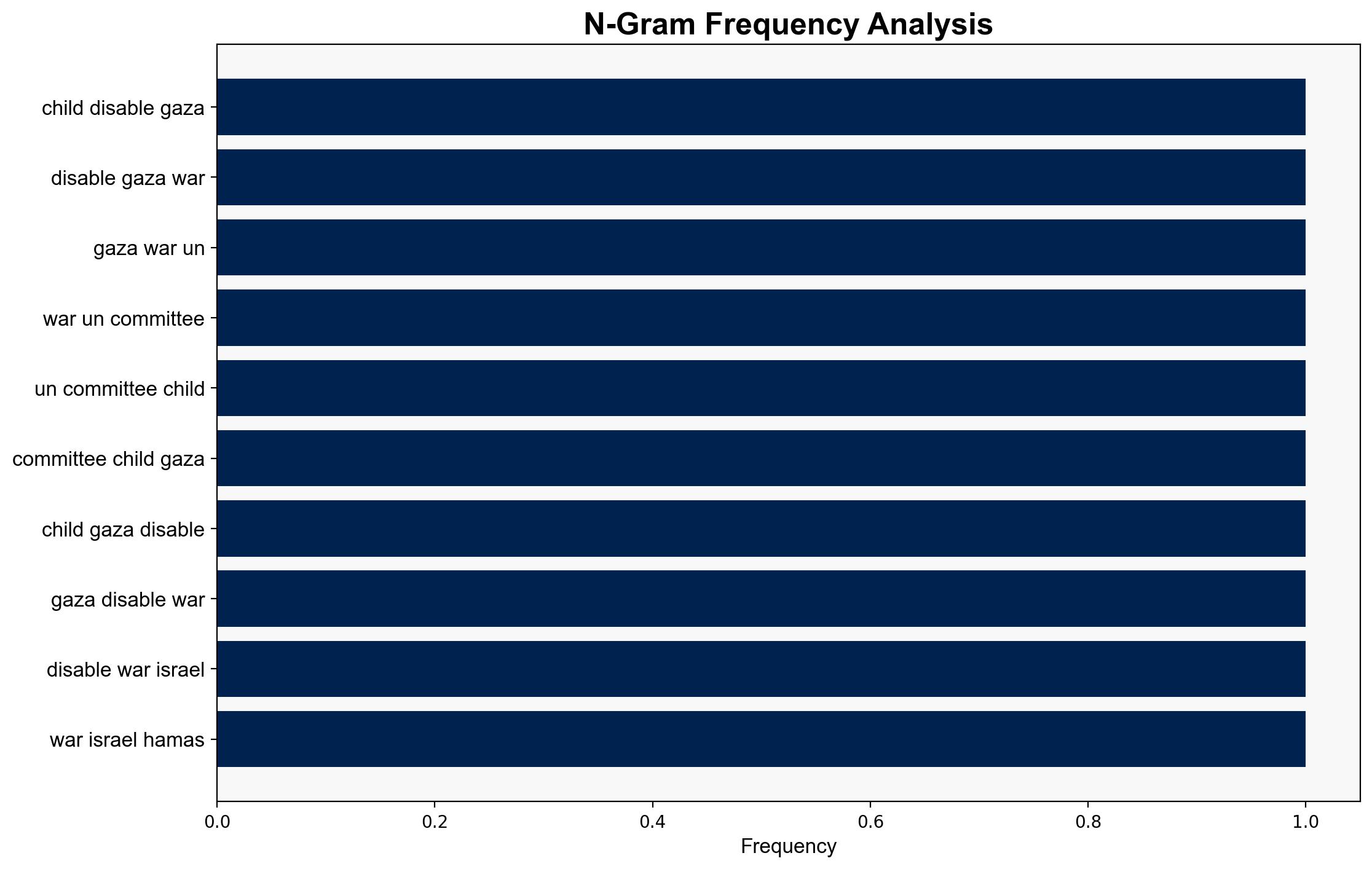At Least 21000 Children Disabled In Gaza War UN Committee – International Business Times
Published on: 2025-09-03
Intelligence Report: At Least 21000 Children Disabled In Gaza War UN Committee – International Business Times
1. BLUF (Bottom Line Up Front)
The most supported hypothesis is that the humanitarian crisis in Gaza, exacerbated by the ongoing conflict, has disproportionately affected disabled children, leading to severe disruptions in their access to essential services. Confidence Level: Moderate. Recommended action includes advocating for immediate international intervention to ensure humanitarian aid reaches affected populations, particularly disabled children.
2. Competing Hypotheses
1. **Hypothesis A**: The high number of disabled children reported is primarily due to the direct impact of military actions and inadequate evacuation protocols for people with disabilities.
2. **Hypothesis B**: The reported figures are exaggerated due to political motivations, aiming to garner international sympathy and pressure Israel for concessions.
Using ACH 2.0, Hypothesis A is better supported by the evidence, which includes specific examples of evacuation challenges and the impact of military actions on disabled individuals. Hypothesis B lacks substantial evidence and relies on speculative motivations without corroborating data.
3. Key Assumptions and Red Flags
– **Assumptions**: It is assumed that the UN Committee’s data is accurate and unbiased. The effectiveness of international humanitarian aid is presumed to be hindered by logistical challenges rather than intentional obstruction.
– **Red Flags**: The potential for data manipulation for political purposes exists. The lack of independent verification of the reported figures is a concern.
– **Blind Spots**: The report does not address the role of local governance in managing aid distribution or the potential impact of internal Palestinian political dynamics.
4. Implications and Strategic Risks
– **Humanitarian Impact**: Continued inaccessibility to aid could lead to a worsening humanitarian crisis, increasing mortality and morbidity among disabled children.
– **Geopolitical Risks**: Escalated tensions between Israel and international bodies could arise if the situation is perceived as a failure of humanitarian obligations.
– **Psychological Impact**: Prolonged exposure to conflict and lack of support could have long-term psychological effects on the affected population, potentially fostering future instability.
5. Recommendations and Outlook
- **Immediate Action**: Advocate for the establishment of secure humanitarian corridors to facilitate aid delivery to disabled individuals.
- **Long-term Strategy**: Encourage international dialogue to develop comprehensive evacuation protocols that consider the needs of disabled populations.
- **Scenario Projections**:
– **Best Case**: Successful international intervention leads to improved aid distribution and reduced casualties.
– **Worst Case**: Continued obstruction of aid results in a humanitarian catastrophe, increasing international tensions.
– **Most Likely**: Incremental improvements in aid delivery with ongoing challenges due to political and logistical barriers.
6. Key Individuals and Entities
– Muhannad Al Azzeh: Cited as a committee member providing specific examples of the challenges faced by disabled individuals.
– Israeli Authorities: Implicated in the report for the need to adopt specific measures to protect disabled children.
7. Thematic Tags
national security threats, humanitarian crisis, regional focus, disability rights, conflict resolution




